
My Sena Stryker Helmet Review: Integrated Tech and Riding Experience
left for contents
I recently picked up the Sena Stryker helmet after spotting it on sale over at SportsBikeShop. Even with the discount, it was still around £400, so not exactly cheap. But I was on the hunt for a new lid after running into some issues with my previous modular helmet, the Shark Evo ES. Living in the UK, rain is just part of life, and I found that the Shark’s visor leaked pretty badly.
I needed something more sealed and functional.
What caught my eye with the Stryker was that it came with built-in Bluetooth and comms — no aftermarket units to install. That was a big draw. It also had a few other features I thought were worth checking out.
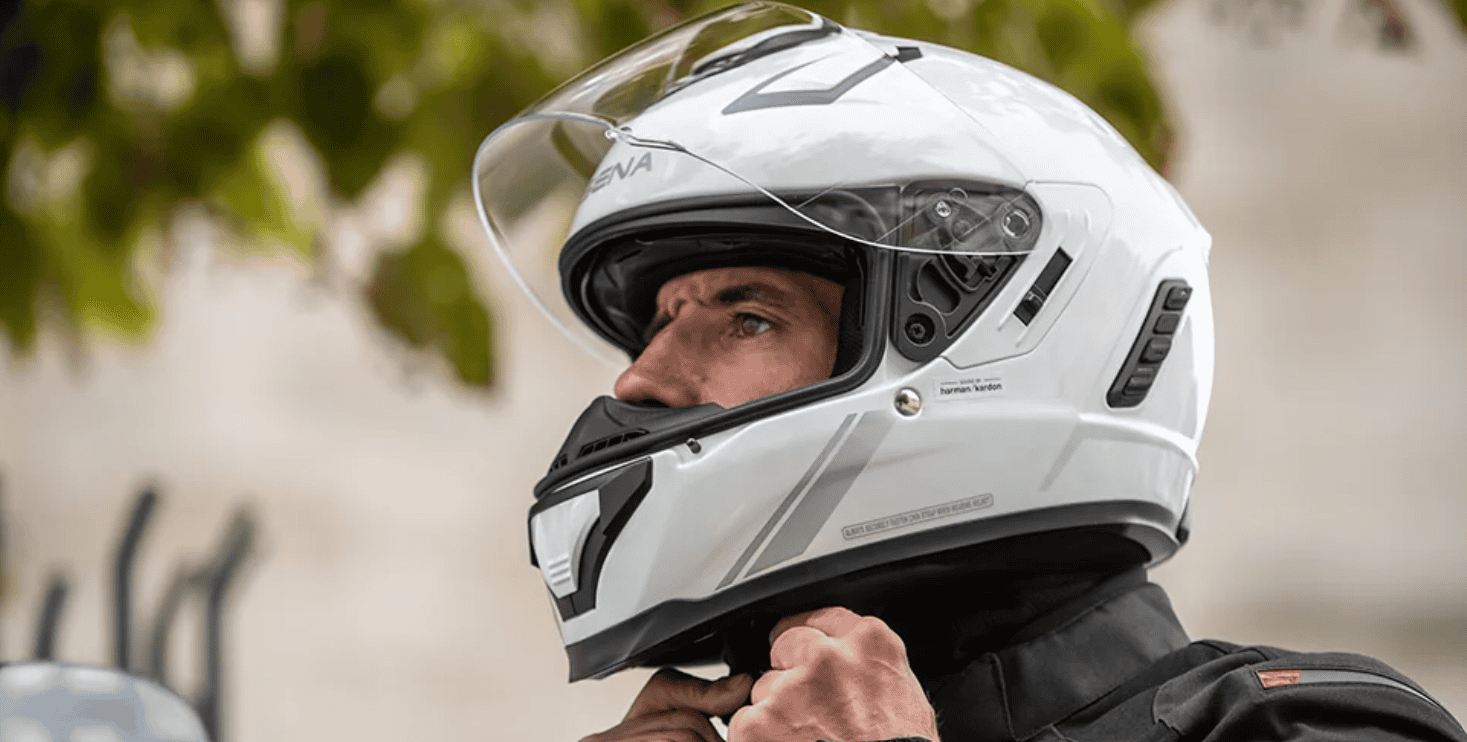
This article is based on the video below by Tom Charnock.
Build & Design: Function First
The Sena Stryker is a full-face helmet — a must-have for me to avoid visor leaks. The main visor locks down firmly with a sturdy little nodule system. It ratchets to different positions, though I usually ride with it fully open or closed. It’s simple but works.
There’s also an internal sun visor, operated by a catch on the side. You just flick it and it slides down or back up. It works easily even with gloves.
Top of the line Sena intercom, sound by Harman Kardon, sun visor, even a tail light... what's not to love?
- Mesh & Bluetooth built-in
- Harman Kardon speakers and mic
- Drop-down sun visor
- LED tail light
- 18 hour battery life
- Can't upgrade the communicator
Ventilation is solid: chin vent, top vents — all easy to open/close with gloves. The airflow is decent when you’re riding head-on into the wind. Some reviewers mentioned the vents felt cheap or plasticky, but in my experience, they’ve worked fine. They feel sturdy enough and function well.
Fogging and Rain Protection: A Dealbreaker Solved
This was one of my biggest concerns. The Sena Stryker doesn’t have a Pinlock, but it does feature an anti-fog treated visor and a breath deflector inside the chin bar. Between the inner coating and the redirection of breath downward, I haven’t had a single issue with fogging — not once in several weeks of use. That’s a big improvement over the Shark Evo ES, which would fog up and leak like crazy.
The visor fits very snugly in the frame, keeping water out even in the worst rain. That was one of my biggest problems with my previous helmet, so this has been a huge win.
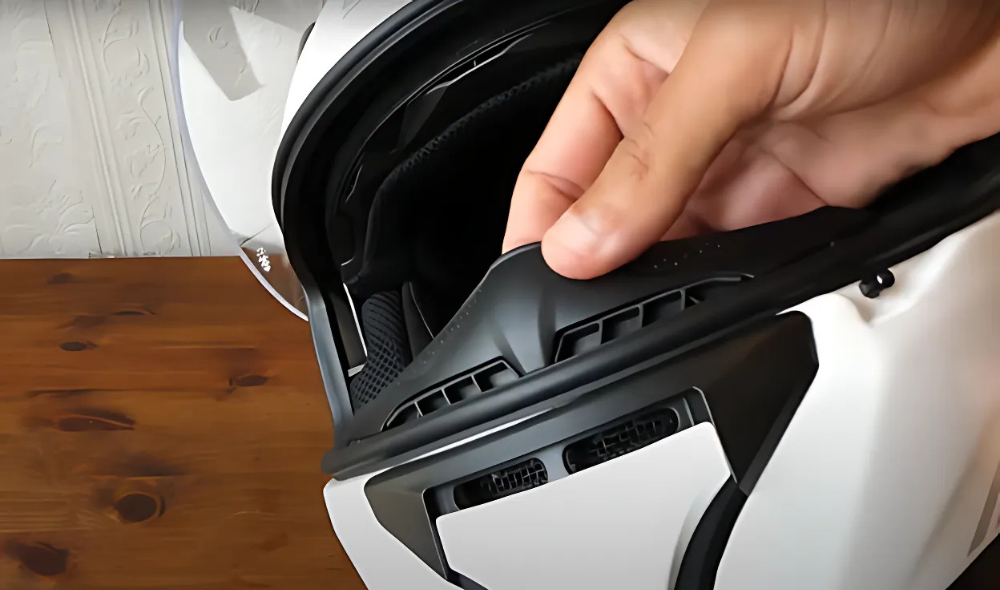
Fit and Finish: Mostly Good
Fit-wise, I grabbed a small (yes, small head here). The fiberglass shell holds both DOT and ECE safety ratings (E1 stamped for German testing). The fit is snug without being tight, and it’s stable across both my Royal Enfield and Yamaha Fazer. No wobbling or buffeting even at motorway speeds.
A closer look at the Stryker revealed a slightly off-center chin vent and some early fraying near the sun visor slot—nothing major, but noticeable. These cosmetic flaws are relatively minor and don’t affect function, but worth pointing out considering the price.
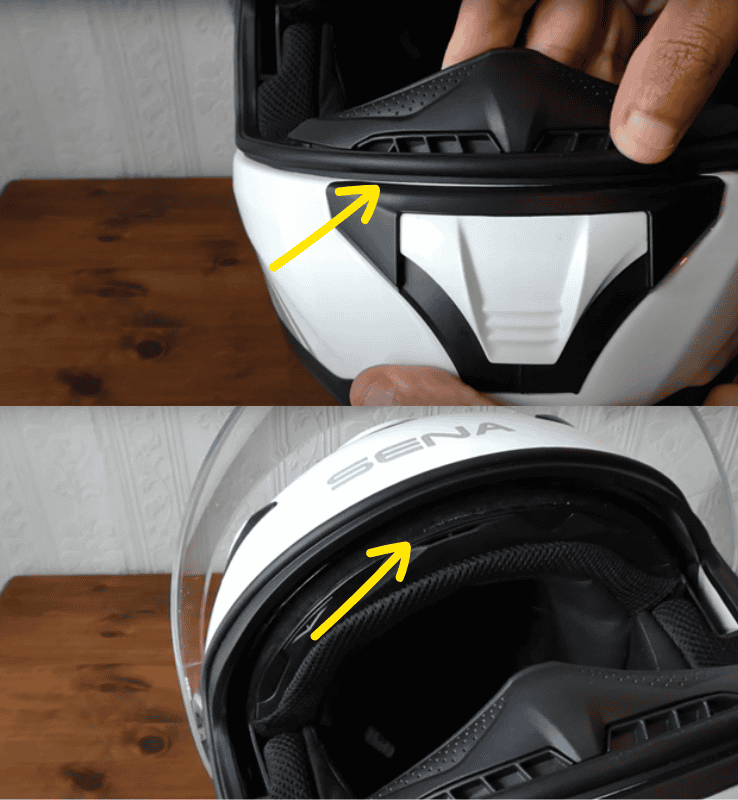
Road Noise and Comfort
Comfort-wise, it’s a quiet helmet. Road noise is far less than what I was used to in my modular helmet. The only slight downside is that if you’re not wearing a neck gaiter, a bit of air sneaks up from underneath, but tilting your head down helps. Overall, very comfortable.
The Tech: Sena’s Built-In Bluetooth
Let’s talk features. The integrated Sena system was one of the big selling points. It has:
- Bluetooth phone and media controls
- FM radio
- Voice assistant support (including “Hey Siri” and Google Assistant)
- Harman Kardon speakers and mic
- LED tail light (configurable via app)
- Mesh intercom (Open Mesh)
From calls to music and navigation, the Stryker’s built-in Bluetooth system keeps you connected and in control while you ride.
You control everything via four physical buttons on the helmet. Pairing is fairly simple once you’ve connected it to the Sena app, but firmware updates were a pain. You need the app + Wi-Fi to get new features. The app isn’t the most intuitive, but it’s essential for customizing settings. Once it’s up and running, it’s brilliant.
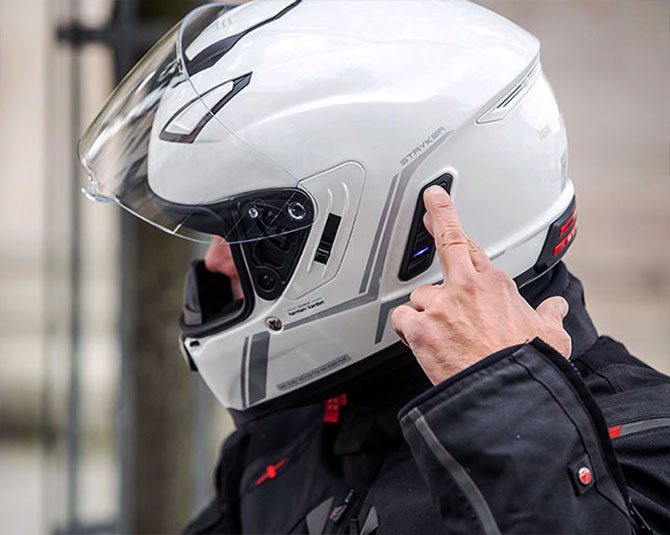
The helmet has a microphone embedded in the chin guard. You can activate your voice assistant by saying the wake word, like “Hey Siri,” and then give commands like “play music” or “navigate home.” While demonstrating this just now, my phone on the table actually picked up my voice command, which goes to show how sensitive and effective the microphone is, even when speaking inside the helmet. You can easily tell it to play music from your streaming service of choice, whether that’s Apple Music, Tidal, Spotify, or anything similar.
You can also activate map directions through the system. If you have a dedicated Bluetooth GPS unit mounted on your dash, you can potentially pair with that, although I personally just use my phone mounted on a holder for navigation, so I have the visual maps there alongside the audio directions in the helmet.
Another cool feature of this helmet is something called Open Mesh. I haven’t actually had a chance to use this yet, mainly because I don’t currently know anyone else who rides and has a motorcycle helmet with Bluetooth or an integrated intercom system like this. So, I haven’t been able to test out the mesh intercom feature where you can talk to other riders. However, I have made phone calls using the system while I’ve been riding, and the sound quality for phone calls is superb.
The tail light at the back remembers your settings from the app. I had mine set to flash while riding at dusk, and it stayed that way automatically. Small touches like that add visibility and convenience.
Battery and Charging
The charging port is magnetic, kind of like the old MagSafe Mac chargers. Super easy to use. Battery life? I’ve charged it once in several weeks and it’s still going strong. Sena claims 18 hours of talk/audio, and that seems legit.
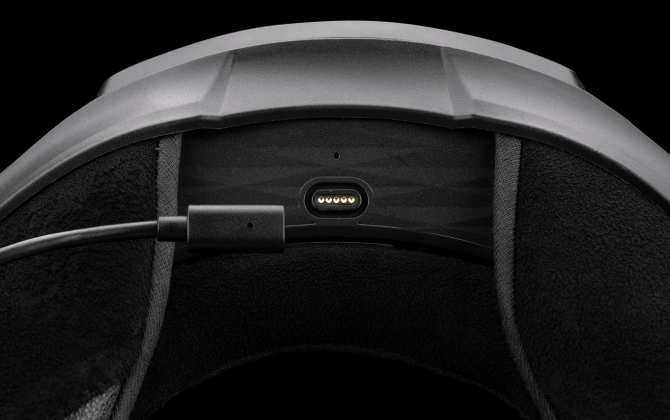
They even include an adapter for USB-C charging if needed.
Usability on the Road
The chin strap uses a ratcheted quick-release, which is a breeze compared to D-rings. The liner is removable for washing. All very straightforward.
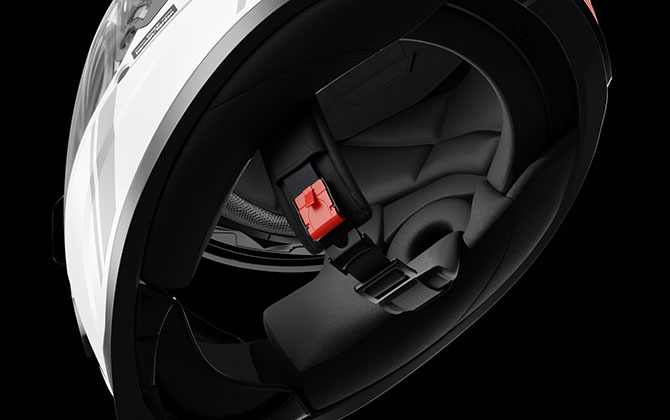
In terms of actual use: the helmet is stable, comfy, and quiet. No neck fatigue. No rain seepage. And the tech just works.
Final Thoughts: Worth It?
I know Sena isn’t as legendary as Arai or Shoei in the helmet game. But for £400 (on sale), getting all this tech + safety + comfort in one package feels like a great deal.
Sure, the setup process is frustrating, and there are a few minor build quality quirks. But nothing that affects function. For anyone looking to upgrade to a tech-enabled full-face lid that works in UK weather — this is a solid choice.
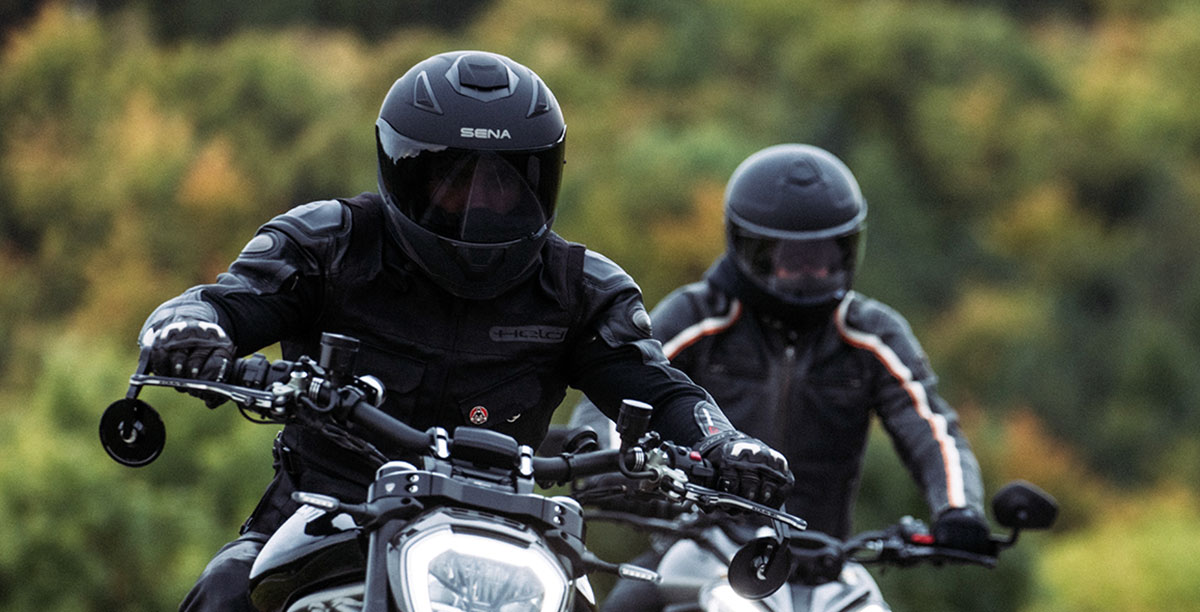
If you’ve got questions I didn’t cover, feel free to drop them in the comments. Cheers for reading – and ride safe.
Top of the line Sena intercom, sound by Harman Kardon, sun visor, even a tail light... what's not to love?
- Mesh & Bluetooth built-in
- Harman Kardon speakers and mic
- Drop-down sun visor
- LED tail light
- 18 hour battery life
- Can't upgrade the communicator
Related

Carbon Fiber Modular Helmets: Ultimate Flip-Up Lids
Discover carbon fiber modular helmets that deliver flip-up convenience, lightweight strength, and serious protection for every ride.

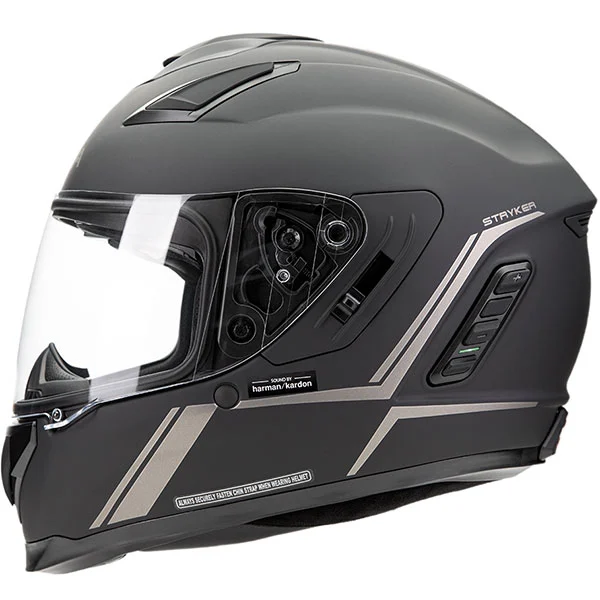

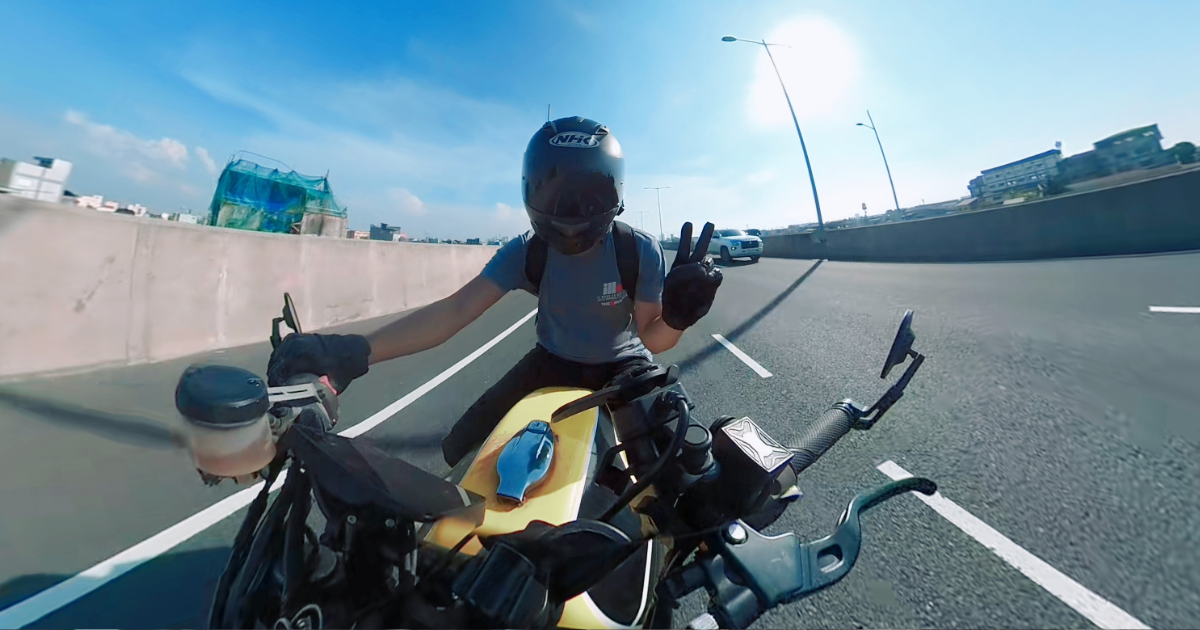
Roy Moseley
4 months ago
Sena Stryker helmet is NOISY. When you close the visor you get so much wind noise that you can barely hear the radio or intercom. With the visor open it is better. I do not recommend this helmet, it is NOISY.